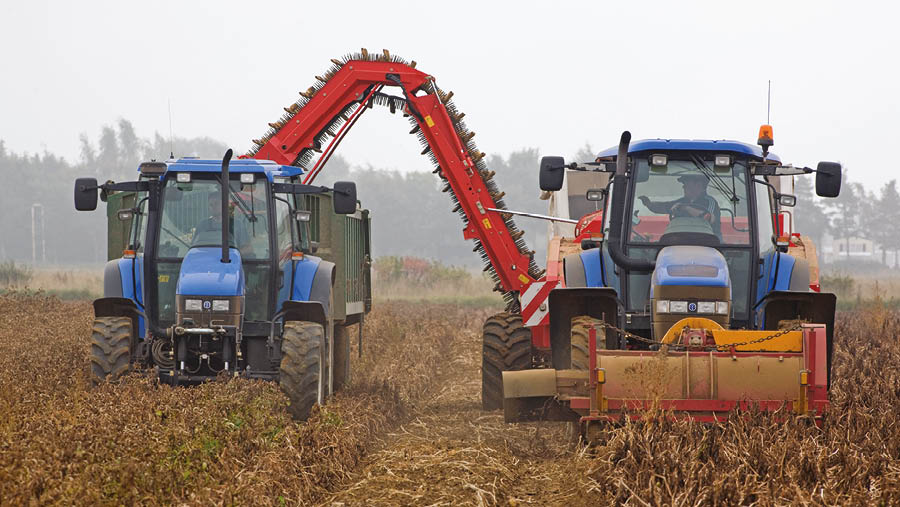Potato acreage at risk as cost-price squeeze bites deeper
 © Tim Scrivener
© Tim Scrivener High costs and high risk will reduce the potato acreage further in 2023, with the fresh prepack and fresh chipping sectors most at risk.
Farmer groups and advisers are seeing some growers reduce acreage next year and others quitting the crop in favour of more secure returns from wheat, sugar beet for anaerobic digestion, and other crops.
See also: Cost of farm inputs soars 34% in a year
Further factors influencing the area are the rents being paid for alternative cropping and the move to regenerative practices, leading some landlords to remove potatoes from their rotations.
Despite this year’s drought, crops are yielding, in many cases, better than expected.
Nene Potatoes is a 26-grower marketing group based in Lincolnshire but with a wider growing area. Its members produce about 85,0000t of potatoes on unirrigated land, mainly for the prepack market.
Commercial director Simon Brown is expecting yields to average about 42t/ha compared with a five-year average in the region of 48t/ha.
As an example, ex-field prices of £230-£250/t for Melody are at a level where members can make some money, but rising costs mean they need more, said Mr Brown.
“The crop we are putting into store now will cost a lot to store, and the packers are not recognising that. With the retailers, it seems like a race to the bottom. The biggest challenge is next year, because of rising costs,” he said.
Reducing acreage
“We have more growers giving up, and others cutting down their acreage. We’re losing four of our members who will not be growing potatoes next season because of the challenge of producing sustainably with increasing costs.”
While haulage supply is not a problem at present, there is a variable fuel surcharge, currently at 12.5%.
At Produce Solutions, an agronomy and technical adviser to about 60 potato growers across the Midlands, East Anglia and Lincolnshire, business unit manager James Lee said the rising cost of production was a massive challenge at a time when the prices of other farm outputs had risen.
“In itself that wouldn’t be a problem if the costs could be passed on – it’s easier in some sectors than others,” said Mr Lee, who expects the drop in the acreage of potatoes grown for the fresh retail sector to see the biggest fall.
The chip-shop trade was also under pressure, he said. “It’s very labour intensive, with small pick-ups and drop-offs. It’s very variable from one day to the next, and staff is one of the biggest challenges – for example, for grading.”
However, Mr Lee also sees positives. “There’s an opportunity for the potato market to get back into a situation where it can become more profitable to grow the crop – a bit of a rebalancing.”
There is strength in the french-fry market, which is a growth sector, he said.
Scottish crop
Phil Burgess, who leads consultancy for Scottish Potatoes, a collaboration between Scotland’s Rural College, Science & Advice for Scottish Agriculture and the James Hutton Institute, said the Scottish crop had suffered less from drought than the English crop.
He did not expect a big drop in acreage for 2023, but said that costs, especially storage costs, and the uncertainty over energy support measures, made potatoes an increasingly high-risk crop.
Potato numbers
- The area planted for prepack represented 37% of the total potato acreage in 2020 – the most recent year for which an official breakdown is available
- Produce destined for the fresh chipping market accounted for 12% in 2020
- Trade estimates of the size of this year’s crop start at 4.5m tonnes, which would be the lowest since 2012. However, yields are turning out better than expected in many regions
- The English potato area fell 9% to 93,000ha this year, according to the Defra June census. However, traders believe the area to be larger than this and that it could fall by 5% or more in 2023
